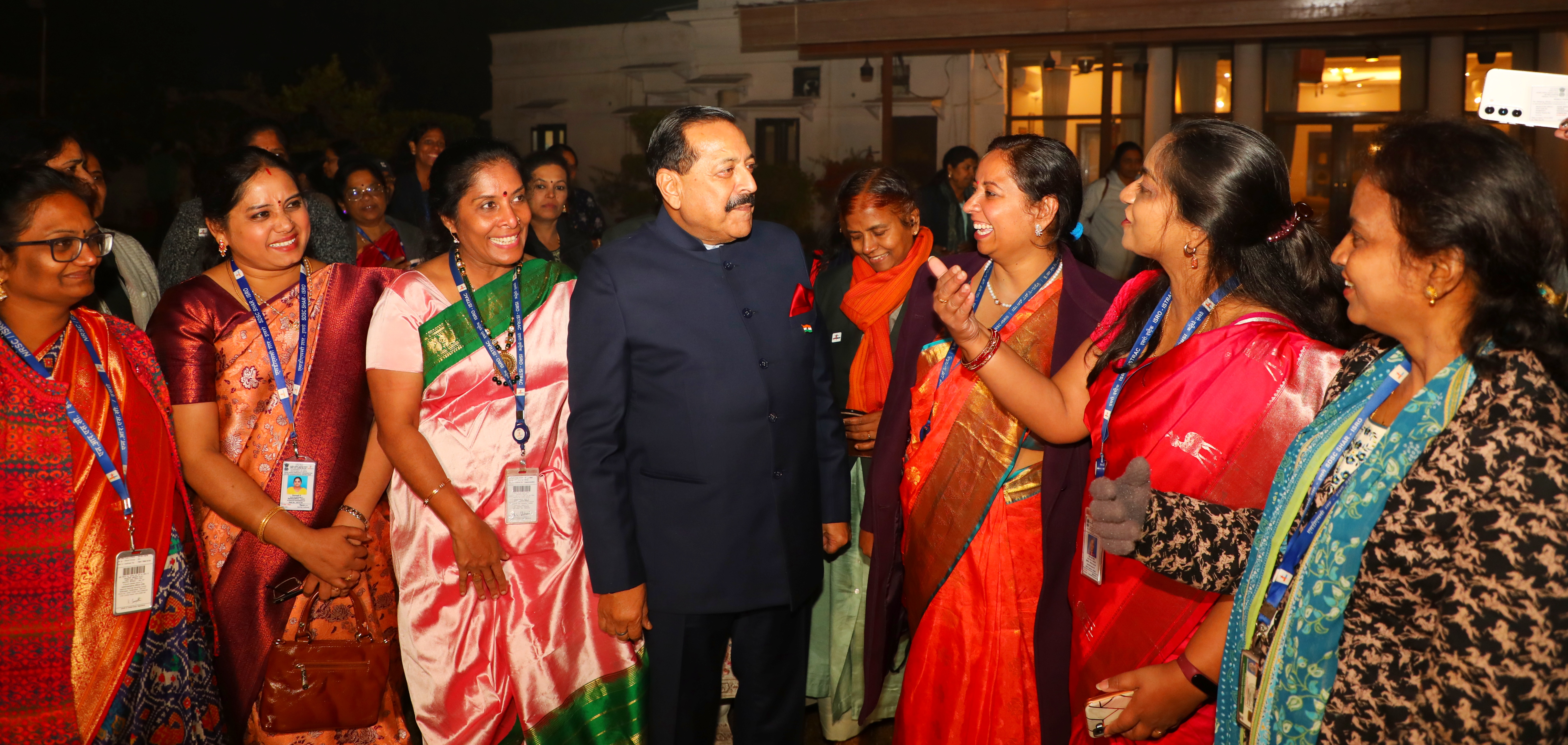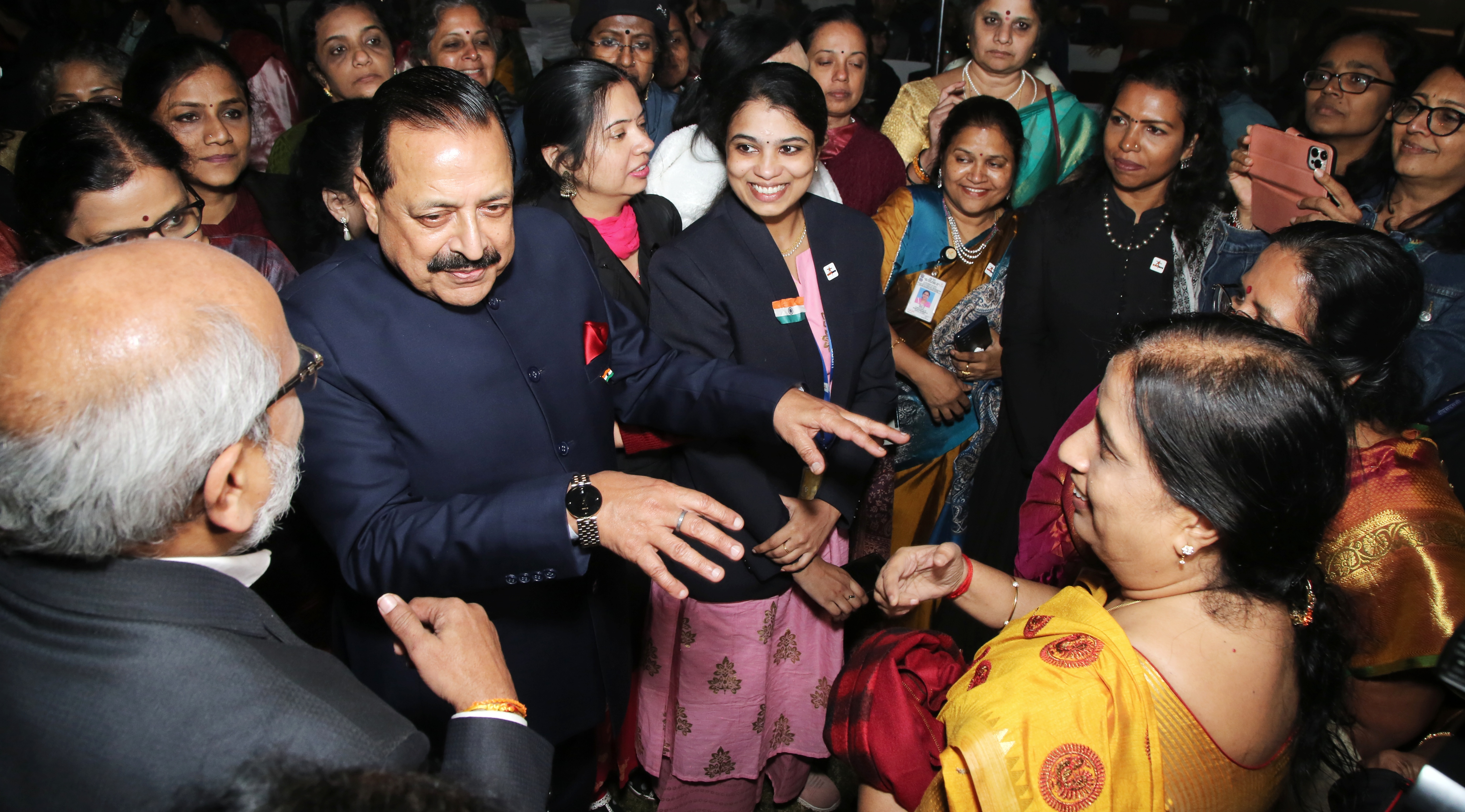The Indian scientific landscape is witnessing a thrilling transformation, with women taking centre stage and shattering glass ceilings. Union Minister Dr. Jitendra Singh’s recent address highlighted this shift, emphasizing the leadership roles women are assuming in prestigious projects like Chandrayaan-3 and Aditya L1. But this isn’t merely a handful of isolated successes; it’s a tide of change, driven by a confluence of factors and paving the way for a more equitable and impactful scientific future.
 Gone are the days when women’s contributions to science were relegated to the sidelines. Today, they’re not just participating, they’re leading the charge. From project directors spearheading complex missions like Chandrayaan-3 to researchers making groundbreaking discoveries across diverse fields, women are demonstrating their exceptional talent and dedication. This shift speaks volumes about the dismantling of traditional notions that may have previously limited their opportunities.
Gone are the days when women’s contributions to science were relegated to the sidelines. Today, they’re not just participating, they’re leading the charge. From project directors spearheading complex missions like Chandrayaan-3 to researchers making groundbreaking discoveries across diverse fields, women are demonstrating their exceptional talent and dedication. This shift speaks volumes about the dismantling of traditional notions that may have previously limited their opportunities.
The future of Indian science looks bright, fueled by the surge of women enrolling in STEM fields at the higher education level. Statistics reveal a remarkable 43% participation, indicating a generation of young women poised to make their mark. This translates to a future workforce brimming with diverse perspectives and innovative ideas, ready to propel scientific progress further.
Dr. Singh’s assurance regarding the absence of gender bias in promotions resonates strongly. While acknowledging the current gap in representation, he emphasizes the positive trajectory fueled by the increasing number of women entering STEM fields. This optimistic outlook inspires and motivates aspiring female scientists, assuring them that merit and hard work will pave the way for leadership positions.
The government’s commitment to bridging the gender gap in science is evident in initiatives like the WISE-KIRAN scheme. This program offers crucial support to female researchers, including those who may have taken career breaks due to personal reasons. By providing opportunities for research grants, training, and networking, WISE-KIRAN acts as a launchpad for their scientific aspirations.
The beauty of WISE-KIRAN lies in its multifaceted approach. From the WISE-PhD program nurturing young researchers to the WISE-PDF scheme supporting postdoctoral fellows, it caters to women at various stages of their careers. Additionally, programs like WISE-SCOPE and WIDUSHI address societal challenges and leverage the expertise of senior women scientists, ensuring inclusivity and impact across the spectrum.
These developments signify a paradigm shift in Indian science. Women are no longer seen as exceptions, but as integral forces shaping the future of discovery and innovation. As they continue to break barriers and claim their rightful place in leadership roles, the scientific landscape will undoubtedly flourish, enriched by diverse perspectives and fueled by the collective brilliance of all genders. This is not just a victory for women in science; it’s a victory for science itself, as India embraces its full potential for groundbreaking achievements on the global stage.
The journey towards complete gender parity in science is ongoing, but the momentum is undeniable. With continued support from initiatives like WISE-KIRAN and a cultural shift towards inclusivity, India’s scientific future is poised to soar even higher, guided by the brilliance and leadership of its women scientists. Let us celebrate this progress, recognize the immense potential it unlocks, and remain committed to empowering the next generation of women to reach for the stars.




